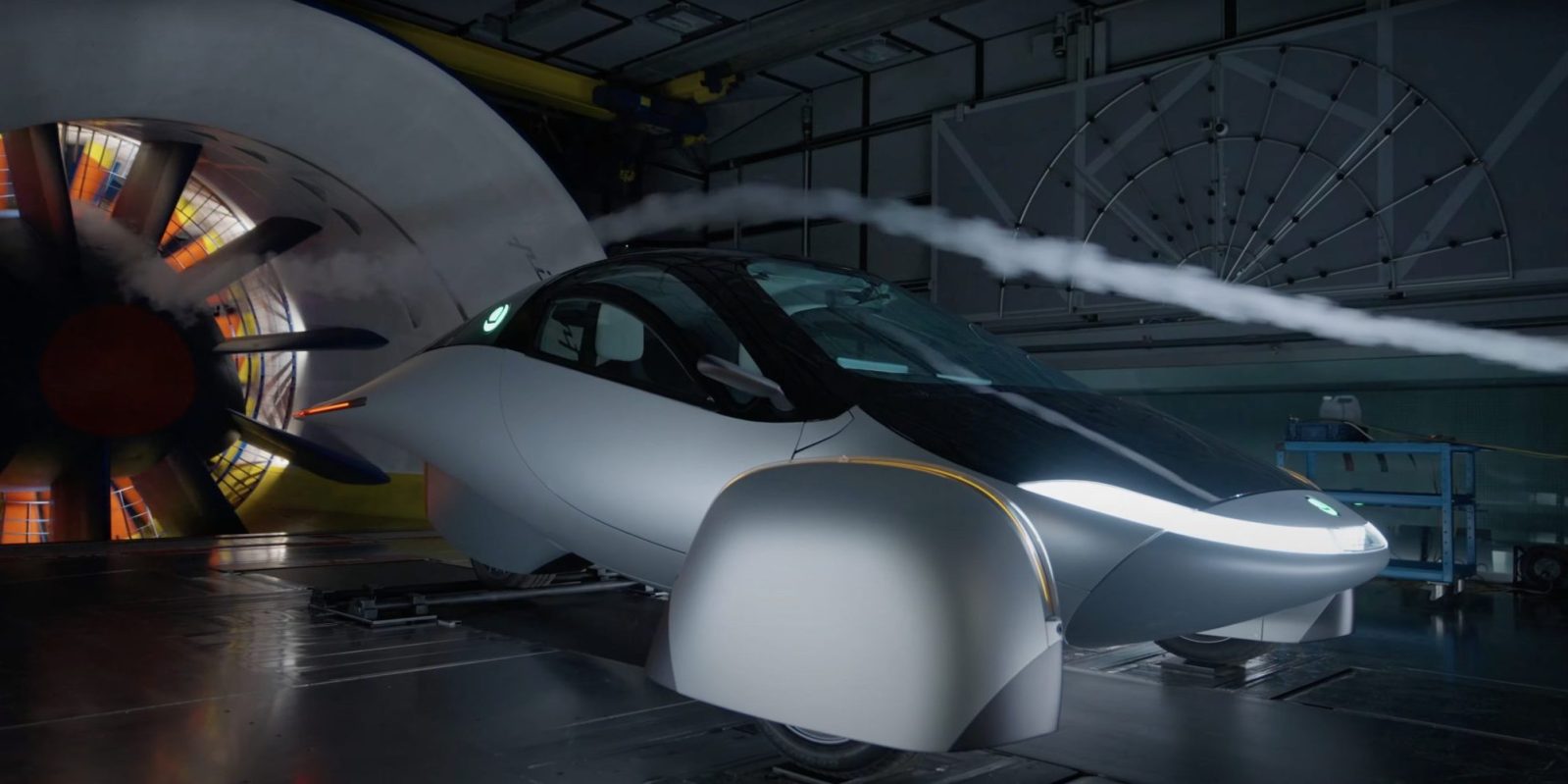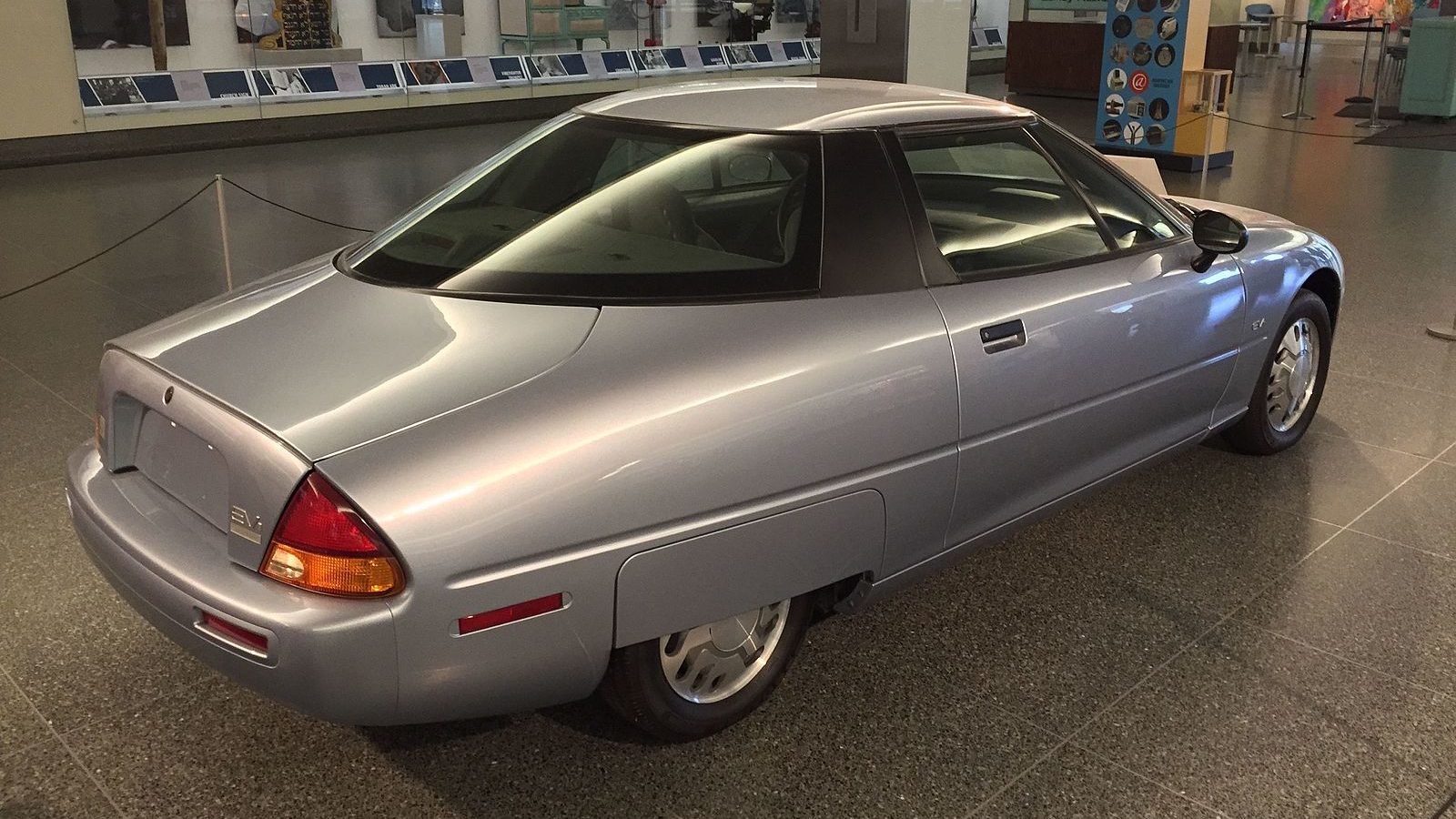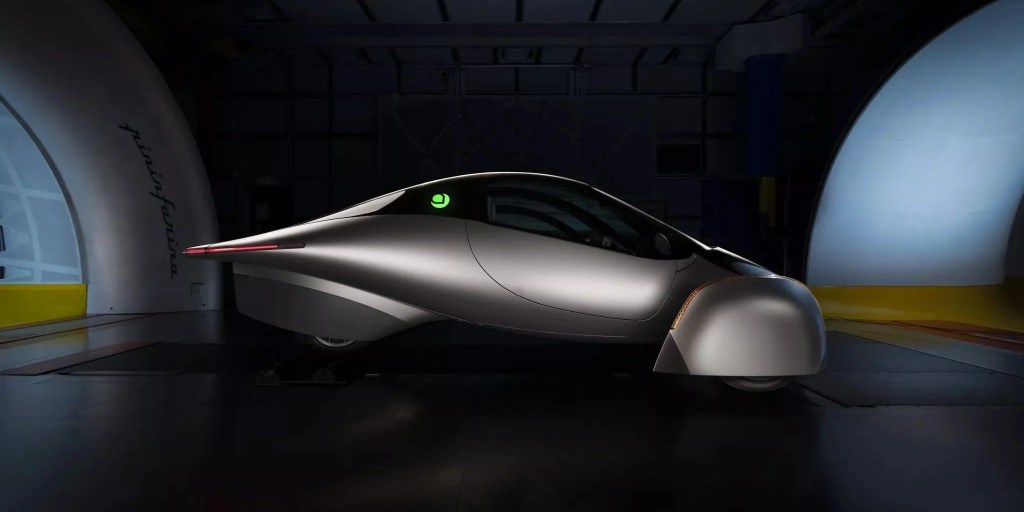
Aptera’s “Gamma” prototype of its solar-powered, three-wheeled electric car is overseas right now, doing aerodynamic testing at Pininfarina’s wind tunnel near Turin, Italy, in the shadow of the Italian Alps.
The company is confident that when results come in, the Aptera will have the lowest aerodynamic drag coefficient of any production passenger car.
Pininfarina’s wind tunnel was opened in 1972, one of the first full-size wind tunnels in the world to be completed and the first in Italy.
Much of car design has moved to “computational fluid dynamics,” or CFD, where computers simulate wind tunnel results. But wind tunnels are still useful for validation testing, to ensure that an automaker’s models coincide with real-world results. That validation testing phase is what Aptera is currently doing in Italy.
There has been a lot of focus on automobile drag coefficients in recent years, as automakers try to make cars more efficient. Efficiency is needed not only in electric cars, where more drag means larger batteries, more cost and more weight for the same range, but also in gas cars, where efficiency-conscious consumers and government regulators demand higher mileage.
And so, we’ve been seeing cars become more egg-shaped in recent years, as smooth shapes cut through the air with less disturbance and, thus, less drag.
However, the ideal shape is not an egg; rather, a teardrop shape is. A long pointed tail is crucial to reducing drag because it reduces turbulent eddies at the rear of the vehicle.
This is why the original EV1 had its pod-like shape with a long and partially tapered rear end, which helped it to achieve a Cd of 0.19, the lowest drag coefficient of any vehicle at the time (since exceeded only by the short-lived Lightyear 0).

But the Aptera takes that to a whole different level. While the EV1 still had a stubby back-end, the Aptera is completely pointed at the rear. This means fewer eddies, less disturbance, and more efficiency.
Another important area of focus for efficiency is the wheels. The Aptera prototype has three almost entirely enclosed wheels, which again reduces the amount of air that gets pushed around by the vehicle. Think of spoked wheels as miniature propellers pointed sideways, and you’ll understand why they can produce so much aerodynamic disturbance (this is also why aerodynamic wheel covers can increase range).
On the EV1, and other aerodynamic vehicles like the original Honda Insight, the vehicle’s rear fenders extended down over the wheels, improving efficiency. But the Aptera, again, takes this to another level by enclosing all three wheels in aerodynamic pods, allowing them to slip through the air more effectively.

All of this comes together to produce an exceptionally efficient vehicle, which Aptera thinks will have the lowest Cd of any production car ever, beating the EV1’s 0.19 and Lightyear 0’s 0.175 marks.
And finally, the Aptera is small. Aerodynamic drag is the product of a vehicle’s drag coefficient (Cd) and its frontal cross-sectional area. A larger car pushes more air than a smaller car, so the Aptera’s small profile means less air is being pushed around.
Aptera claims that the combination of these factors will make it the “most efficient vehicle on the planet” (well, maybe not more efficient than this one, but we’ll say they meant “car”). Plus, with the large solar panels on its roof, this means that its vehicle will need “no charging for most daily use.”
Electrek’s Take
While startup automakers like to make big claims that sometimes don’t turn out in reality, Aptera’s claim here seems completely achievable, and in fact, we’d be very surprised if it didn’t break records. I mean, just look at the thing.
In Aptera’s previous incarnation, its vehicle supposedly had a Cd of 0.15, but that didn’t make it to production. And early on, Aptera claimed that this new iteration would beat even that mark with a Cd of 0.13. So 0.175 seems like a cake walk, particularly given the shape of the Aptera’s radical design.
So the more difficult part about their claim isn’t the “most aerodynamic” part, but the “production car” part. There’s still a long way to go before getting this car to market, and the road for solar EV startups is fraught with peril.
Top comment by Damon Ekstrom
I truly would love to see Aptera succeed. Their success would after all incentivize other manufactures to start incorporating solar technology into EVs, which seems like such a natural step in EV technology. It's been awhile too since I've seen a startup with so many passionate people behind the curtain, it's just unfortunate that they don't have anyone with deep pockets like Musk funding their endeavors.
That being said, there are two lingering questions that have to be answered first before I could ever consider a purchase:
1) How reliable is a 3 wheel design in slippery conditions?
2) What's the crash test safety rating? As aerodynamic as the vehicle is, I need to know that it would keep me just as safe as any other normally designed vehicle on the market.
If this passes with flying colors, I will happily sign up for one.
But Aptera, both in its previous and current incarnation, has captured somewhat of a spark in the public consciousness that other solar EV startups or funky three-wheeled EVs have had a hard time capturing. It even ran a surprisingly successful crowdfunding program (before pausing at the request of the SEC), showing that people really do want this car to come out.
And why not? It has a cool look, it’s making a lot of big promises (including a potential future of a 1,000-mile battery, which this author thinks is patently ridiculous), and its design looks like it could actually deliver on some of those promises.
If it truly is as incredibly efficient as it looks, maybe it could actually be the first solar EV to actually work, to take the idea of solar EVs (like those we saw at the Electrek Formula Sun Grand Prix last week) and put them on the road, for real, and not just in the hands of college students or research projects.
If you’re interested in the Aptera EV, Aptera is taking $100 reservations. If you’d like to sign up, you can use our Aptera referral code afor $30 off that reservation fee.
FTC: We use income earning auto affiliate links. More.



Comments